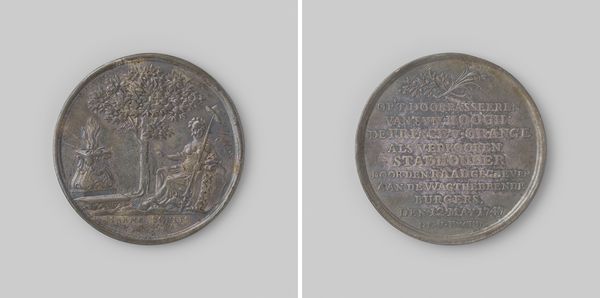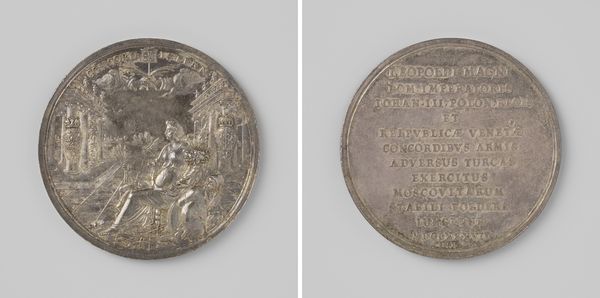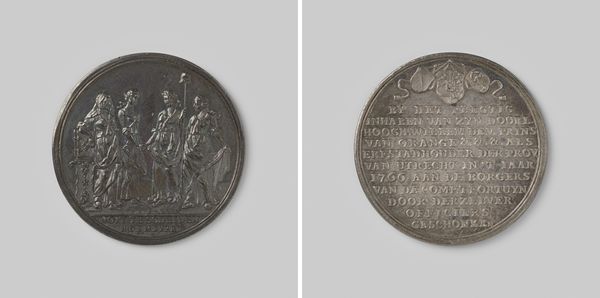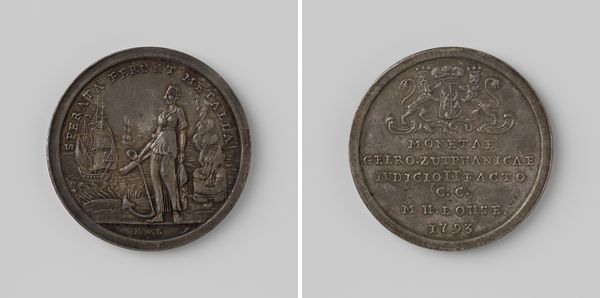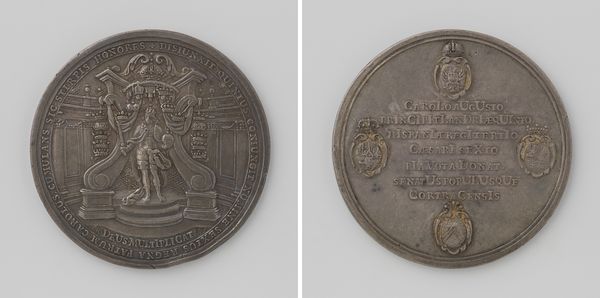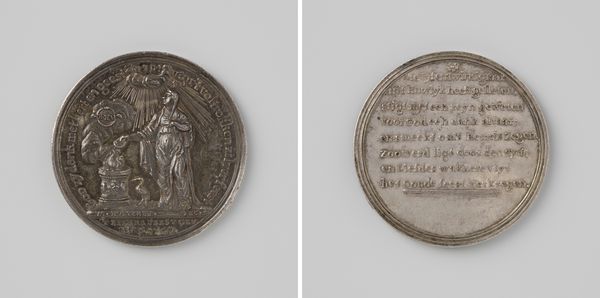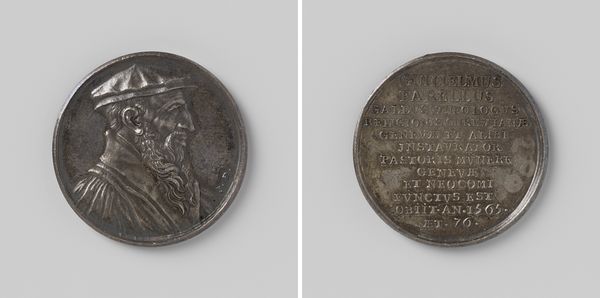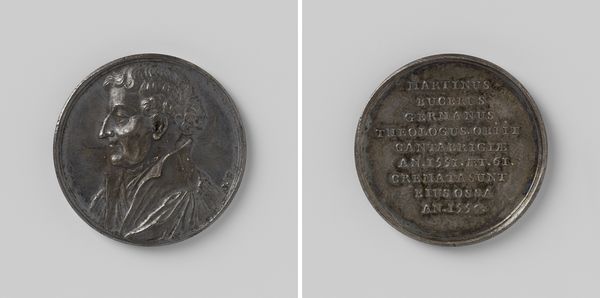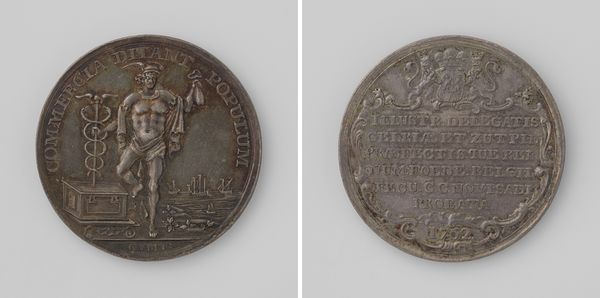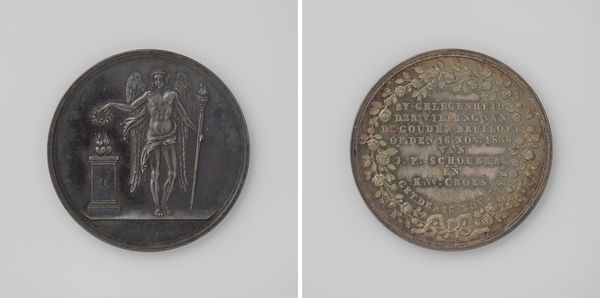
metal, relief, sculpture
#
portrait
#
baroque
#
metal
#
sculpture
#
relief
#
sculpture
#
history-painting
Copyright: Rijks Museum: Open Domain
Curator: So, here we have a fascinating example of commemorative art: “Eeuwfeest der Ridderlijke Confrerie van de Handbussche te Delft,” a medal created in 1737 by Martin Holtzhey. It appears to be made of metal, likely silver or a similar alloy, fashioned into a relief. Editor: My initial impression? It's giving off serious ancient vibes, like something you'd unearth in an archaeological dig, you know? The figures almost seem to be emerging from the metal itself. Curator: The obverse side showcases a group of figures, seemingly allegorical, bearing flags and weaponry. The composition adheres to classical principles, striving for balance and clarity despite the miniature scale. Note how the artist uses the limited space to convey a sense of depth. Editor: I see what you mean, but the cramped feeling is a little intense for me. There is so much crammed into this tiny space. Almost like a silver dollar packed with all the history Delft could muster. You know, though, I feel like if it were cleaned and polished, all its gravitas would disappear! Curator: An astute point. Indeed, the patina contributes significantly to its historical presence. On the reverse, we observe an inscription detailing the occasion—the centenary of the Handbussche Guild. It includes text in Latin and heraldic elements—a visual representation of the organization's prestige and longevity. Editor: Ah, Latin, always a good sign! You see it means this is not some run-of-the-mill coin but it must have a really legit story! It all contributes to the atmosphere of old-world sophistication and just the overall momentous vibe, don't you think? It feels pretty grand, for something so tiny and functional. Curator: Precisely. This medal functions not only as a commemorative object but also as a historical document and an example of Baroque artistry—evident in the ornate details and the theatrical presentation. Holtzhey masterfully integrates symbolism and text to convey the Guild's legacy. Editor: Yeah, Baroque and kinda bad-ass—like these tiny dudes were super important back in the day and wanted to ensure that we didn't forget. So, now tell me, how much do you think it’s worth, just roughly? Curator: From a formalist perspective, its true value lies in how it reveals cultural narratives about the Guild’s place in society—encoded in its aesthetic and structural elements. Thank you. Editor: Okay, Professor. Well, thanks, this gives me something to think about next time I consider the worth of stuff and value of history.
Comments
No comments
Be the first to comment and join the conversation on the ultimate creative platform.
